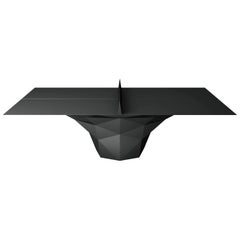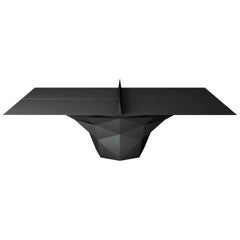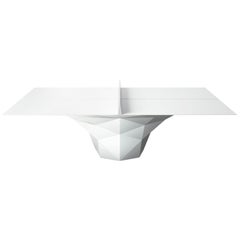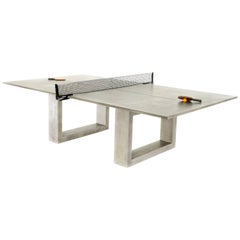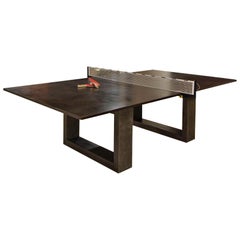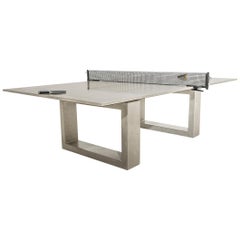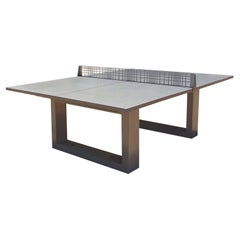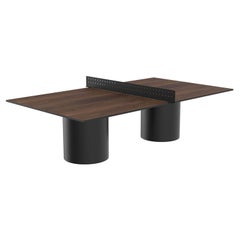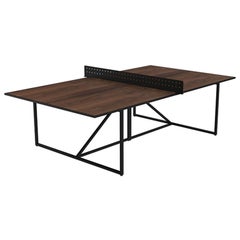Custom Ping Pong
21st Century and Contemporary European Center Tables
Stainless Steel
21st Century and Contemporary European Center Tables
Stainless Steel
21st Century and Contemporary European Center Tables
2010s American Modern Dining Room Tables
Concrete, Stainless Steel
2010s American Modern Dining Room Tables
Concrete
2010s American Brutalist Dining Room Tables
Concrete, Cement
2010s American Brutalist Game Tables
Concrete
Recent Sales
2010s Canadian Modern Game Tables
Aluminum
2010s Canadian Modern Game Tables
Aluminum
21st Century and Contemporary European Center Tables
People Also Browsed
21st Century and Contemporary European Modern Vases
Travertine, Marble
21st Century and Contemporary British Scandinavian Modern Lounge Chairs
Sheepskin, Beech, Oak
21st Century and Contemporary American Mid-Century Modern Wall Lights an...
Brass
2010s Argentine Modern Vases
Ceramic, Clay, Pottery
2010s Argentine Modern Planters, Cachepots and Jardinières
Ceramic, Clay, Pottery
21st Century and Contemporary Chinese Industrial Wall Lights and Sconces
Concrete
Vintage 1970s Sofas
Velvet
2010s South African Modern Coffee and Cocktail Tables
Brass, Steel
21st Century and Contemporary Chinese Industrial Wall Lights and Sconces
Concrete
21st Century and Contemporary Organic Modern Console Tables
Elm
2010s Scandinavian Modern Chandeliers and Pendants
Brass, Bronze
2010s South African Modern Daybeds
Stainless Steel
21st Century and Contemporary Organic Modern Console Tables
Elm, Reclaimed Wood
2010s Italian Modern Vases
Ceramic
Antique Late 18th Century Italian Baroque Cabinets
Metal, Wrought Iron
2010s South African Settees
Hide
Custom Ping Pong For Sale on 1stDibs
How Much is a Custom Ping Pong?
Finding the Right Game-tables for You
Bring drama and duels of dexterity into your home with vintage, new and antique game tables for every kind of game.
Who doesn’t love a little competition? Historians estimate that early versions of games such as backgammon were played by members of ancient civilizations at least as far back as 3,000 B.C. Chess, which likely originated in India as a game called chaturanga, is a timeworn test of skills and strategy as well, and the modern era’s iteration of the game was enjoyed by nobles at least as early as the 16th century.
While the upper classes in Europe were among the only chess players who could afford the game’s decoratively carved ivory pieces, the game eventually became accessible to the general public. In the late 19th century, the game’s first official chess championships took place, a realm that eventually produced celebrated players such as avowed Eames Executive chair enthusiast Bobby Fischer. Today, antique chessboards have seen an uptick in demand owing to a successful Netflix series in 2020 called The Queen’s Gambit, which chronicles the life of fictional chess prodigy Beth Harmon.
Modern versions of chess boards and other home game tables may have evolved to accommodate the variety of games for which they’re used but are still versatile pieces of furniture. Not every card table with chairs is the ideal dining table, but you certainly don’t have to limit a game table to recreational use.
Antique trictrac tables, for example, were products of 18th-century France, wherein furniture makers created what looked like multipurpose neoclassical writing desks and card tables that when their tops were removed revealed trictrac, chess and checkers surfaces. Other game tables, in a complete commitment to fun, merely support good old-fashioned competition. Contemporary Ping-Pong (or table tennis) tables, which have origins in 1880s Victorian England, can be quite sophisticated in form and are made from a variety of materials today. A billiards table is an iconic piece for any game room or living room, but your pool table is really going to be used for only one thing, right?
Antique or new Regency-style game tables, mid-century modern tables or Art Deco–style card tables, perhaps fashioned from rosewood or mahogany, might be equipped with convertible tabletops to shift from meals to game time in a snap. If you prefer poker or opt for a card table topped with a checkerboard, convenient drawers and other compartments can be found in new and vintage game tables that fit poker chips or other types of game pieces perfectly.
Find a range of top-quality vintage and antique game tables on 1stDibs that can help you introduce a bit of class to every competition at home.
- 1stDibs ExpertJanuary 10, 2025What professional ping-pong tables are made of differs from piece to piece. However, most tables feature a playing surface crafted out of particleboard, plywood or medium-density fiberboard that bears a laminate finish. Generally, professional ping-pong table surfaces are at least 0.75 inches thick to provide adequate bounce. Explore a selection of ping-pong tables on 1stDibs.
Read More
20 Inviting Dining Rooms Perfectly Arranged for Entertaining
Top interior designers show — and tell — us how to create delectable spaces for hosting dinner parties.
This Alain Delon–Designed Table Is Almost as Handsome as He Was
Fans of the French film star may be surprised to learn that he had a flair for furniture with sleek lines and disco-era flash.
Uchronia’s Plant Stand Gives Pots a Pretty Perch with All the Trimmings
Like other pieces in the firm’s Candy Box collection, the cheerful limited-edition design showcases French craft.
The Ultimate Guide to Types of Tables for the Home
Whether you’re just moving in or ready to give your home a makeover, our guide will give you pointers on tables that are fitting for every room, nook and hallway.
Is Lionel Jadot the Willy Wonka of Upcycled Belgian Design?
From his massive collaborative workshop in a former paper factory, the designer concocts funky furniture from disused materials, as well as luxe hotel interiors like the new Mix Brussels.
Inspired by the Cosmos, Sandra Nunnerley’s Nova Table Has a Futuristic Feel
The designer’s innovative use of an unexpected material gives this console a lift.
This 19th-Century Gilded Desk Displays a Fanciful Kingdom in Marquetry
The stately piece brings both gravitas and whimsy to any work space.
In Guadalajara, These Luscious Side Tables Are Chiseled from Volcanic Rock
Use them as tables or stools, indoors or out.
